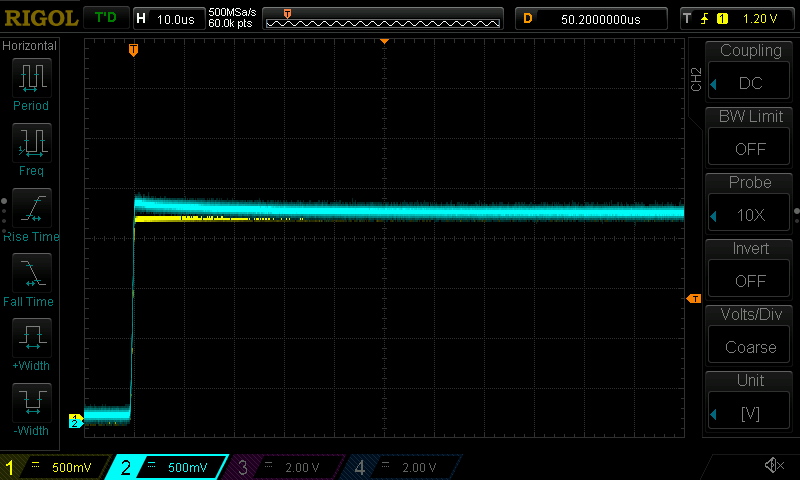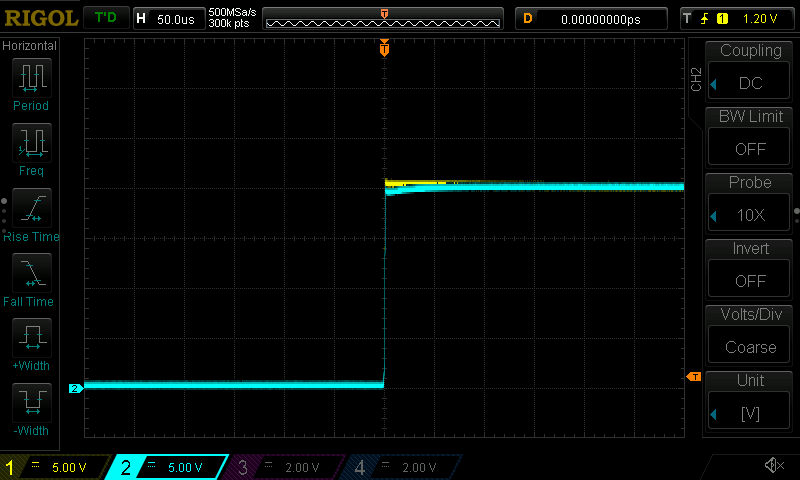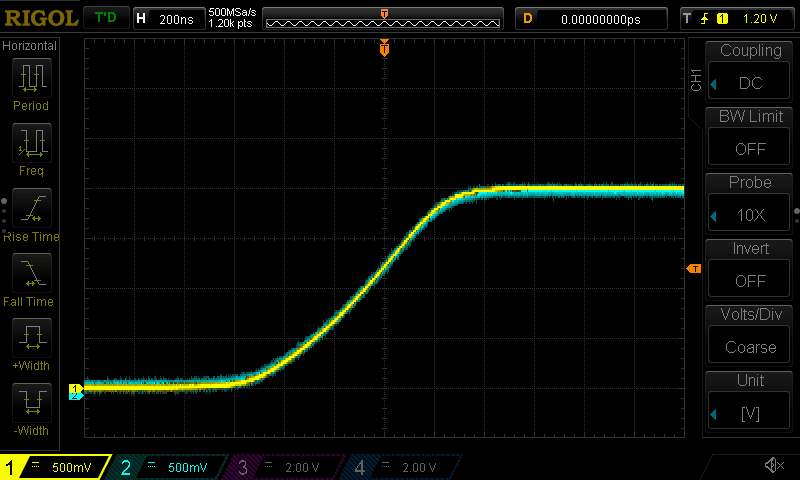In the previous log (https://hackaday.io/project/169390-a-10x-100mhz-differential-probe/log/197059-slim-probe-build-log-and-first-findings) I ranted about having to swap caps to get the input attenuator into the trim cap's range. Here are some more details about that.
In step 2 of the compensation procedure (see here: https://hackaday.io/project/169390-a-10x-100mhz-differential-probe/details far down) we try to match positive signal path's AC gain with DC gain. If they don't match, we get this kind of output error:

(Ch1: single ended reference input, Ch2: differential probe)
There's an overshoot in the probe's output, which means that the AC gain is too high.
The probe was equipped with
C5...C8 = 330p + 22p + 220p + (2...10)p = 574...582p.
This was too low even with the trim cap at the upper end. The probe peaked to 2.2 V with an actual input of 2V. We can guess the right overall capacitance as
574 * 2.2/2 = 631
which seemed rather high to me, so I swapped the small cap to get
C5...C8 = 330p + 68p + 220p + (2...10)p = 620...628p.
The result:

Since I got too low AC response now, the 68 pF cap was too large. And, unfortunately, estimating the right cap values from one scope shot apparently isn't an exact science.
I ended up with
330+220+33+10+trim = 595...603 pF
to get this result:

That was ok and I was also able to match both signal paths.
Swapping these caps was very difficult because the layout doesn't have thermals for the caps' ground connection, which means that the solder joints were very hard to heat up even with low temp solder.
One obvious solution to this would be to increase the trim range, but the temperature coefficient of the JR100 (or JR030) trim caps is lower than that of trim caps with a higher range. We'd be sacrificing performance in the application for convenience in the assembly and compensation, and that doesn't sound like a good compromise for a device that is only built in singles (and caps are cheap).
 Christoph
Christoph
Discussions
Become a Hackaday.io Member
Create an account to leave a comment. Already have an account? Log In.